Best I Trained: Romulo Quirarte Sr.
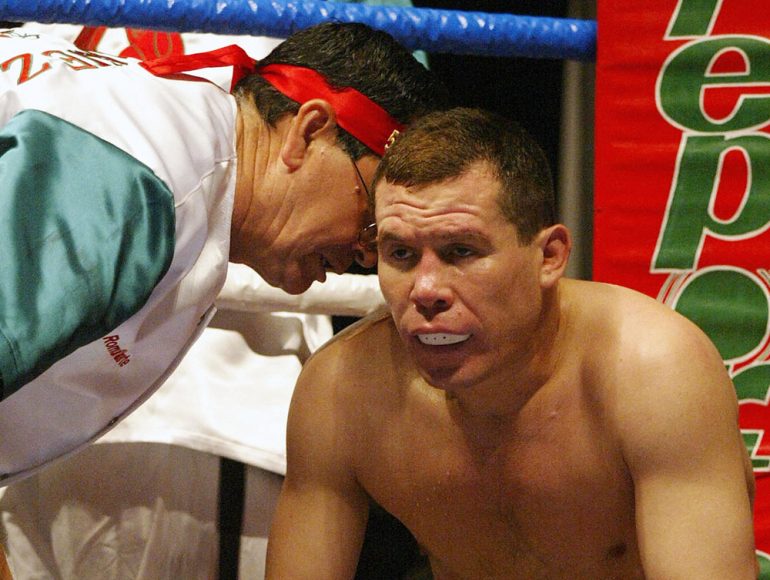
While some trainers get all the attention, others are just as talented but prefer to work in the background and don’t seek to be lauded. Romulo Quirarte Sr. is exactly that. The Mexican veteran has guided 10 fighters to world titles but most notably helped mold a young Julio Cesar Chavez into a champion.
Quirarte, who was the youngest of three brothers, was born on February 10, 1946, in Guadalajara. His early years were particularly fraught but helped shape him into the person he is today.
“My mother abandoned us when I was very young; I was two years old,” Quirarte told The Ring. “Nobody knows what happened, even until today. We never had any contact with my father physically or any other way of communication. It is a very sad part of my life.
“My grandparents, who were older, couldn’t take care of us. We lived there until [I was] around 5 years old. They sent us to Mexicali to live with my aunt, but unfortunately it was very bad because they pushed us away. They said, ‘How bad can you guys be that your mom didn’t even want you and abandoned you?’ Not feeling welcome made it very difficult for us.”
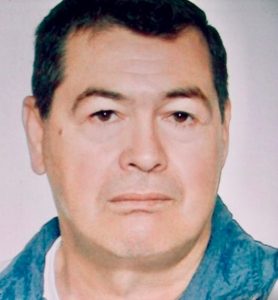
(Photo courtesy of Romulo Quirarte)
Quirarte first became interested in boxing when he was 8, as much as anything to have a refuge where he could hide away after school.
“I used it as an escape from the abandonment. It made me feel better,” he explained. “It belonged to a gentleman named Don Memo Valero – he was an amazing trainer – where I was able to learn and absorb the way he used to teach, especially being respectful and not using bad words in the gym. He made it clear that it was a place for people to become somebody. He used to take care of them; he used to help them, feed them.”
The youngster also doubled down on his school work and became a top student with the highest honors. By the time he was around 11, the government gave him a way back to Guadalajara to study at a better school. He returned with his brothers and they took care of themselves.
Unfortunately, Quirarte wasn’t able to complete his scholarships, due to everything he had gone through and the responsibility of taking care of his brothers.
“I went to Tijuana with the mentality of going to the United States, but I got a job selling newspapers, which at the time were extremely popular. Everybody read the newspaper,” he said. “I sold newspapers and I used to get a percentage from every newspaper I was selling. Later on, I became part of the newspaper company, where I was able to do very well. After establishing myself there – after around five, six years – I became a trainer at around 24, 25. [The money from working on the newspapers] helped me pay for the rent of the place I was training.”

Quirarte (center) stands by, along with his two sons and Jose Luis Castillo, as Julio Cesar Chavez trains for his Sept. 18, 1998, fight against Oscar De La Hoya. (Photo By Brian Brainerd/The Denver Post via Getty Images)
In 1973, Quirarte became the chief manager of the sports unit El Crea (meaning to create, to build) in Tijuana, and just like Valero had helped him, he vowed to help similarly troubled children. To this day, he still runs the facility (though it has been remodeled).
Karma paid him back in spades when a fresh-faced youngster arrived from Culiacan.
“Julio Cesar Chavez came to Tijuana with a big suitcase full of dreams,” Quirarte recalled. “One of those dreams was to become a world champion. At the time, he only had two or three professional fights. I became his trainer until he became a world champion.
“Working with Julio, without a doubt it was an amazing experience working with an amazing athlete like him. He had an amazing work ethic, hunger to become something special. One of my biggest memories was to see him becoming a world champion.”
“Julio Cesar Chavez came to Tijuana with a big suitcase full of dreams. … I became his trainer until he became a world champion.”
Unfortunately, Quirarte was unable to be in Chavez’s corner on that night because he didn’t have a U.S. visa at that time. Soon afterward, circumstances saw the fighter and trainer go in different directions.
“I trained him until his third world title defense. After that, a gentlemen Angelo Gutierrez, who bought the contract of Julio Cesar Chavez, they decided to change camp to a different area in Mexico that was far away … At the time, most of my kids were younger and I was also training [Raul] ‘Jibaro’ Perez, who was on the verge of becoming a world champion, and [Juan Jose] ‘Dinamita’ Estrada,” he explained. “So, I decided I couldn’t move out of this area to go into camp with Julio Cesar Chavez.”
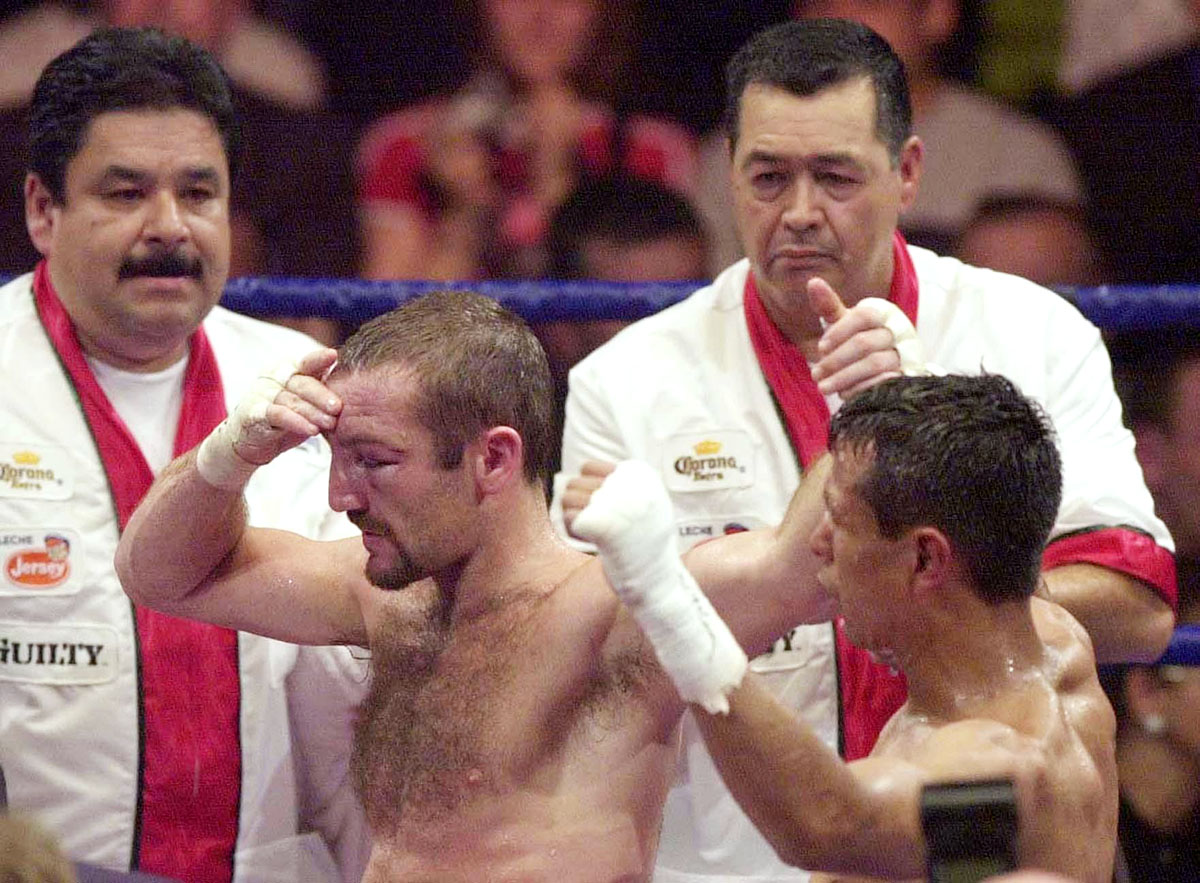
Manuel Medina, trained by Quirarte (back right), successfully defended his WBO featherweight title for the second time with a split decision over Scotland’s Scott Harrison in Glasgow. Harrison would win the immediate rematch by 11th-round stoppage. (Photo by Andrew Milligan – PA Images/PA Images via Getty Images)
Both Perez and Estrada became world champions in 1988. Quirarte remained as humble as ever.
“Even when Perez and Estrada used to fight in Inglewood, California – at the time, the weigh-in was the same day as the fight – after the fight I had to go back right away to TJ to keep selling newspapers, even though I had world champions,” he said.
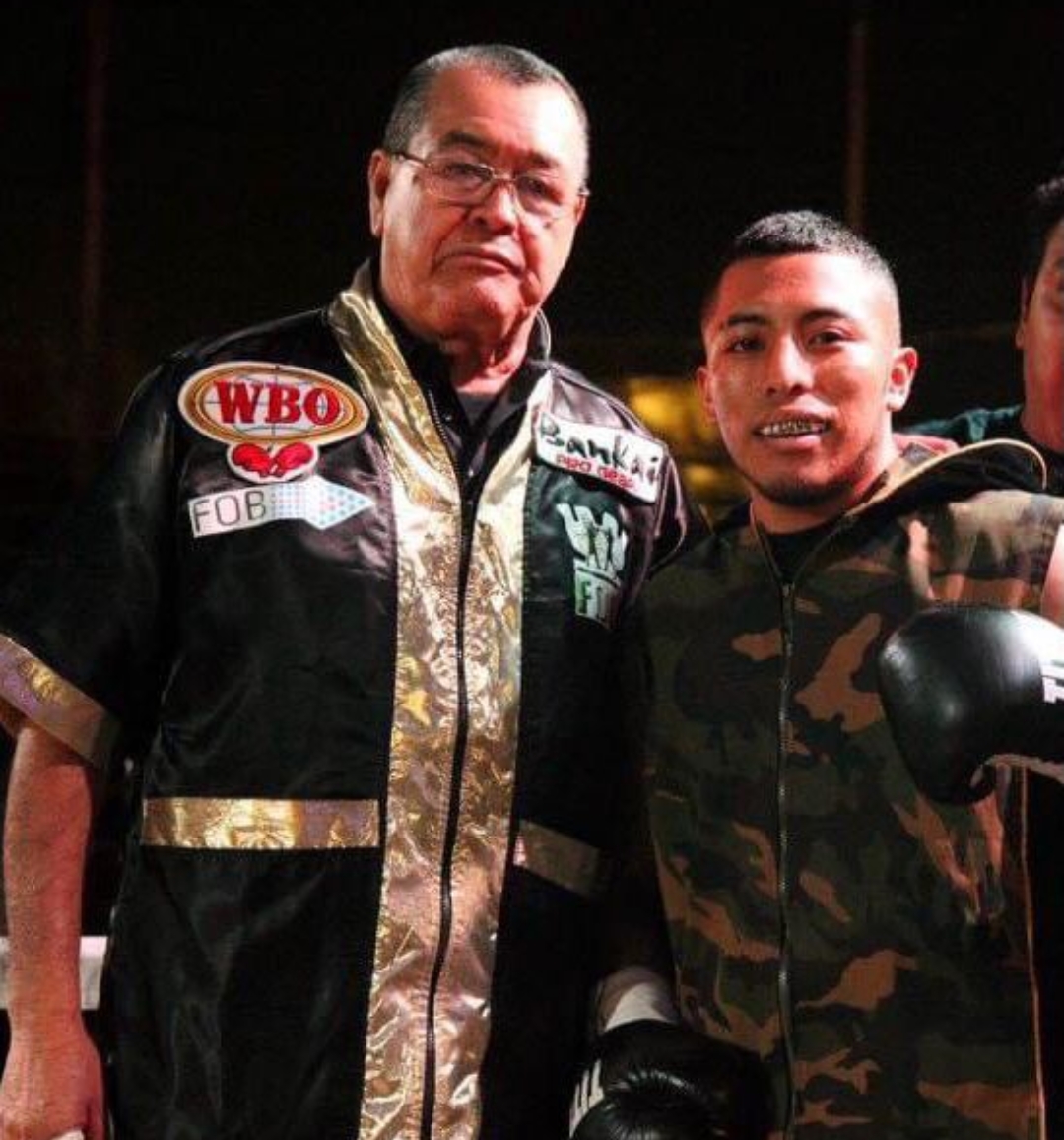
Quirarte and then-future titleholder Alexandro Santiago. (Photo courtesy of Romulo Quirarte)
Jorge Paez, Manuel Medina, Jose Luis Ramirez and Yori Boy Campas were the next off the production line. Quirarte and Chavez linked back up ahead of “El Gran Campeon’s” rematch with Oscar De La Hoya in 1998, and they worked together until Chavez retired in 2005.
Quirarte has also found more success guiding the likes of Jose Luis Castillo, Jesus Chavez, Julio Diaz, Antonio De Marco, Humberto Soto and Hugo Cazares to world honors.
After several years without a world champion, Quirarte recently steered Alexandro Santiago to the WBC bantamweight title by defeating the legendary Nonito Donaire, which the trainer says was a special moment for him. (Santiago will defend his title for the first time against Junto Nakatani on Saturday.)
Boxing has long been the family business; Quirarte’s sons followed their father into the sport.
“My children have practiced boxing since 1997; they were very young,” he said. “I saw myself in need [when preparing] Julio Cesar Chavez to fight Oscar De La Hoya. I needed help and they helped me. Since then they have been with me.”
The Quirarte family still runs La Crea in the model of what Romulo learned from his old master, Valero, back in the day.
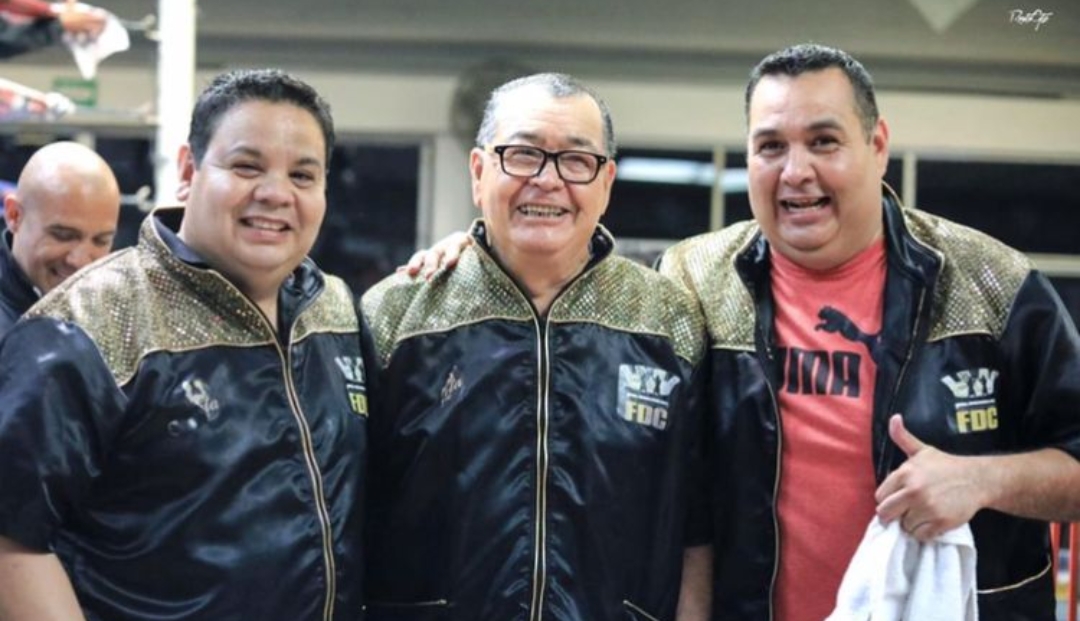
(Photo courtesy of Romulo Quirarte)
“[We’re] like a huge, big family. Everybody is welcome. We have between 120 and 140 kids training there,” he said. “Everything is for free. Everyone comes and says, ‘Hello’ when they come and ‘Bye’ when they are leaving. Very respectful. The majority of them are kids who have already graduated, most of them have a university degree, and that’s what I’ve been teaching them: ‘You need to prepare for after boxing is over. Have an education.’ Hopefully one of them will be the next Santiago.”
Quirarte, now 78, is married, has six children, 15 grandchildren, three great-grandchildren and lives in Tijuana.
He graciously took time to speak to The Ring about the best he trained in 10 key categories.
BEST JAB
Humberto Soto: “Humberto Soto and Raul Pérez. I would pick Soto. He had a very good sense of timing, so his jab was always on point. That’s why I made him so good with his jab, to be able to open almost every combination with his jab, and then he was able to land the punches after it.
BEST DEFENSE
Julio César Chávez: “Julio used to spend hours and hours after training doing a lot of bending. He was able to catch and stop punches. If you look at highlights of him, you can see he makes a lot of opponents mis, due to his beautiful upper-body movement.”
BEST HAND SPEED
Manuel Medina: “He has speed; he doesn’t have power. What I tried to do was help him develop that speed, and that’s one of the reasons he was able to become a five-time world champion. He had amazing fundamentals and was able to adapt and to be able to [move around] the ring and use his hand speed to win fights.”
BEST FOOTWORK
Alexandro Santiago: “We work with the abilities that every fighter has, because all of them are different. Some can be big punchers, some of them have the ability to move and avoid and counterpunch, and that’s exactly what we have done with Santiago. Even though he is still developing, he can get way better. He’s not in his prime yet. He has the ability to move and is very smart to get in and out when he needs to throw combinations.”
SMARTEST
Chávez: “Without a doubt, Julio Cesar Chávez. He was something completely special. Very smart.”
STRONGEST
Juan José Estrada: “Estrada was a strong fighter who always moved forward.”
BEST CHIN
Chávez: “When you talk about a puncher, you can not make a puncher. It doesn’t matter what kind of exercises you do – you either have it or you don’t have it. The same thing with a chin. He was born with those attributes. … The work ethic and exercise, the way he used to roll with the punch made him even better, but [he had] a tremendous chin.”
BIGGEST PUNCHER
“Yory Boy” Campas: “He had amazing power. Estrada could really punch; he could knock somebody out with one punch. Chavez would stop you, but that was due to tremendous punishment.”
BEST BOXING SKILLS
Chávez: “Without a doubt, Julio Cesar Chavez. Soto was an incredible, smart fighter, but Julio was above all of them. That’s why he’s the king.”
BEST OVERALL
Chávez: “He was special in all aspects. His heart was unbreakable – mentally you will never break that guy apart. I never saw [him have] a doubt, especially when he was in his prime. You can even see when he was losing that fight with Meldrick Taylor, he never once had a doubt. Even [when] he knew he was behind, he pulled [off] an amazing victory. The burning desire he used to have, his work ethic and consistency was just incredible, and that’s why he became who he was. And to this day, he still applies that discipline and consistency. He was the full package. Anything you can want in a fighter, he had.”
Paco Damian helped coordinate and translate this feature. The Ring appreciates his assistance.
Questions and/or comments can be sent to Anson at [email protected].














